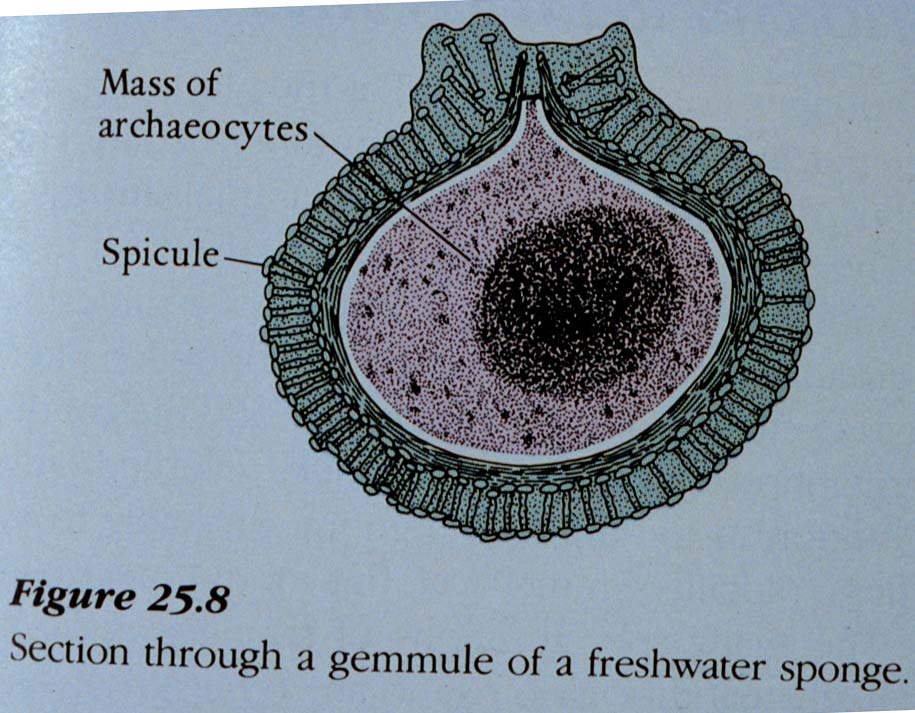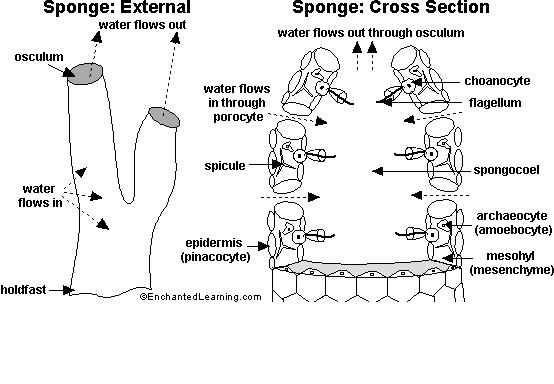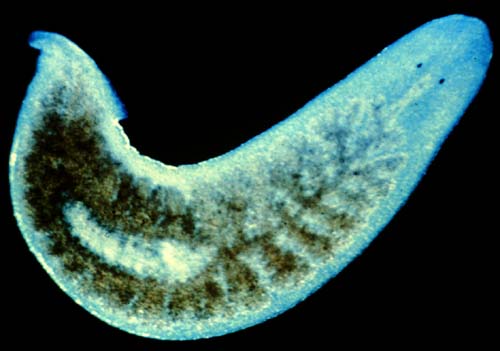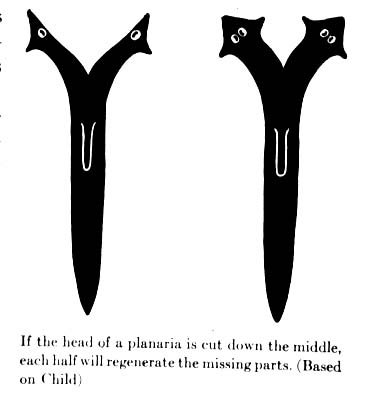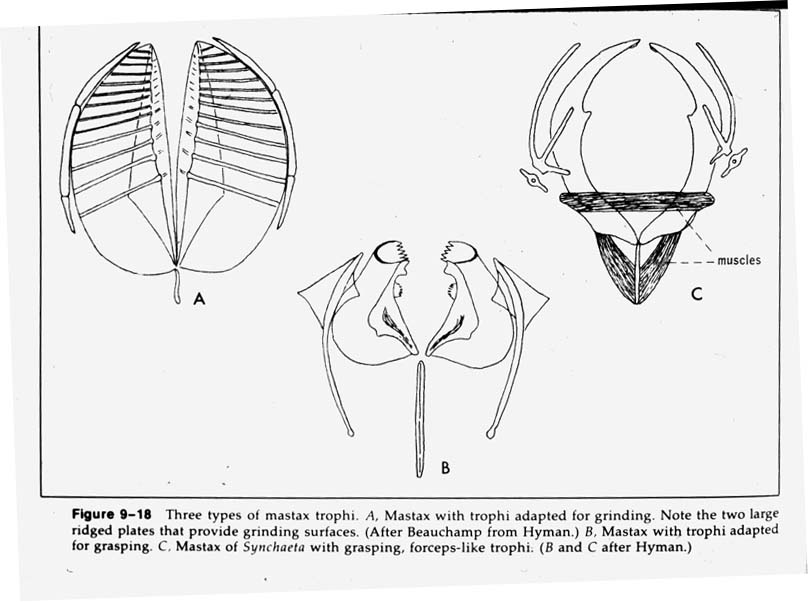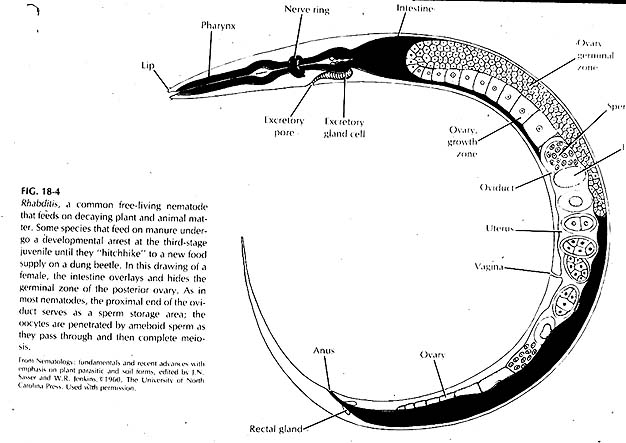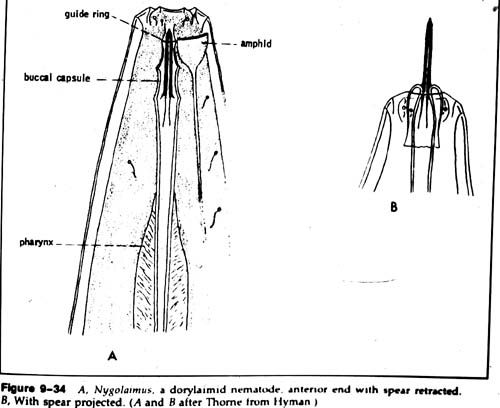 | Freshwater Life: PORIFERA, CNIDARIA, PLATYHELMINTHES, ROTIFERA, NEMATODA |
Gemmule |
Sponge |
Sponge with endosymbionts |
Hydra photo |
Jellyfish photo |
Liver fluke cycle |
Planarian feeding |
Planarian photo |
Planarian regeneration |
Planarian with endosymbionts |
Schistosomiasis cycle |
Rotifer anatomy |
Rotifer cyst |
Rotfer life cycle |
Rotifer mastax |
Rotifer photo |
Various rotifers |
Nematode anatomy |
Nematode stylet |
PORIFERA
Gemmule
Sponge photo
Sponge with endosymbionts
CNIDARIA
Hydra photo
Jellyfish photo
PLATYHELMINTHES
Liver fluke cycle
Planarian feeding
Planarian photo
Planarian regeneration
Planarian with endosymbionts
Schistosomiasis cycle
ROTIFERA
Rotifer anatomy
Rotifer cyst
Rotfer life cycle
Rotifer mastax
Rotifer photo
Various rotifers
NEMATODA
Nematode anatomy
Nematode stylet
Sponges (poriferans) are very simple animals that live permanently attached to a location in the water - they are sessile. There are from 5,000 to 10,000 known species of sponges. Most sponges live in salt water - only about 150 species live in fresh water. Sponges evolved over 500 million years ago.
The body of this primitive animal has thousands of pores which let water flow through it continually. Sponges obtain nourishment and oxygen from this flowing water.
Anatomy: The body of a sponge has two outer layers separated by an acellular (having no cells) gel layer. In the gel layer are either spicules (supportive needles made of calcium carbonate) or spongin fibers (a flexible skeletal material made from protein). Sponges have neither tissues nor organs. Different sponges form different shapes, including tubes, fans, cups, cones, blobs, barrels, and crusts. These invertebrates range in size from a few millimeters to 2 meters tall.
Diet: Most sponges eat tiny, floating organic particles and plankton that they filter from the water the flows through their body.
Reproduction: Most sponges are hermaphrodites (each adult can act as either the female or the male in reproduction). Fertilization is internal in most species; some released sperm randomly float to another sponge with the water current. If a sperm is caught by another sponge''s collar cells (choanocytes), fertilization of an egg by the traveling sperm takes place. The resulting tiny larva is released and is free-swimming; it uses tiny cilia (hairs ) to propel itself through the water. The larva eventually settles on the sea floor, becomes sessile and grows into an adult. Some sponges also reproduce asexually; fragments of their body (buds) are broken off by water currents and carried to another location, where the sponge will grow.
Classification: Kingdom Animalia (animals), Phylum Porifera (sponges), Classes: Calcarea (calcerous sponges - having spicules), Demospongiae (horn sponges, like the bath sponge), Scleropongiae (coralline or tropical reef sponges), and Hexactinellida (glass sponges).
see lamblioz
